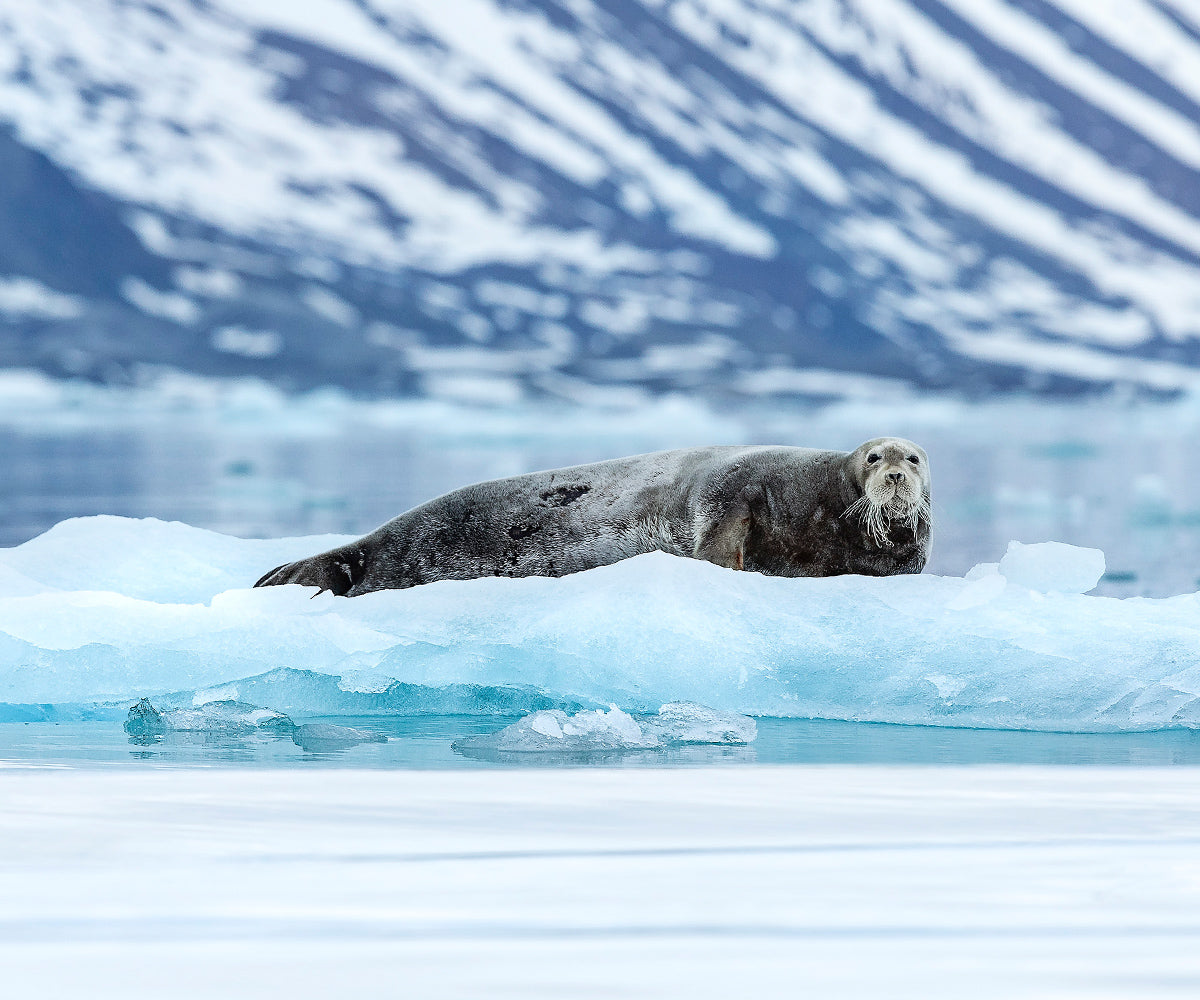Why Does Planting Trees in Kenya Help Preserve the Polar Ice Caps?
It’s all about the air we share. When Alex and Philippe Chantecaille traveled to the Arctic last summer, they witnessed the effects of climate change first-hand. Then they vowed to do something about it.
Polar bears swimming between fractured drift ice. Glaciers calving with a thunderclap. Walruses sardined onto a small rocky beach. Some of these snapshots along the Arctic coast are typical sights in summer, when the sun hangs high in the sky for months on end. But these occurrences are now starting earlier in the season and lasting longer, as air and water temperatures ratchet up to unprecedented levels.

These are just a few of the sights—and insights—that Alex and Philippe Chantecaille gathered during their expedition last summer to Arctic Norway with The Perfect World Foundation. The adventurous siblings spent eight days aboard a 1953 icebreaker, the M/S Stockholm, along with a dozen crew and scientists on a journey sponsored by the Scandinavian NGO whose mission is to conserve the environment for the next generation. They began their trip in Longyearbyen, home to the Norwegian Polar Institute, then ventured up the Svalbard archipelago to Spitsbergen, past coastal walls of ice and snow-tipped mountains, stopping in Ny-Ålesund, one of the world’s northernmost settlements and the site of various scientific research stations. Finally, the group sailed on into the silent, placid waters of the North Pole ice pack, where few humans have ever set foot.
“You can see climate change affecting this part of the world much more than any other place on the planet, with temperatures that are as much as 20 degrees Celsius higher than normal,” says Lars Jacobsson, TPW’s Swedish chairman and co-founder. That’s a dramatic swing of more than 60 degrees Fahrenheit, which has a compound effect, Jacobsson explains. Increased rainfall contributes to the formation of small lakes on the glaciers, whose dark surfaces absorb heat, causing even more glacier melt. And the disappearance of “fjord ice” between islands is exacerbated by warmer Gulf Stream waters reaching the north pole, diminishing the traditional hunting grounds for various species and threatening biodiversity.
“The north needs to be saved because it is full of life. It is life,” Alex says.

Still, in spite of the often pristine and desolate coastline drifting by, the expeditioners, led by veteran Arctic explorer Ola Skinnarmo (who has crossed the North Pole 10 times), encountered an abundance of indigenous species both on land and by Zodiac boat, including a cliff teeming with nesting guillemots (a black-breasted seabird), reindeer, bearded seals, and polar bears. On one thrilling occasion, the siblings stood on deck under the midnight sun watching a mother polar bear suckle her two cubs, before leading them to finish off a seal kill made by another bear—a risky venture that went on for hours. “The north needs to be saved because it is full of life. It is life,” Alex says.
The polar ice cap is also key to our planet’s ecological balance. White ice reflects rather than absorbs heat and serves as the planet’s refrigerator, so the rapid loss of ice in the north will accelerate global warming. And the northern ice cap “is the engine for the Gulf Stream, and if you lose the Gulf Stream, you’d better prepare for an entirely new climate,” Jacobsson says. And it's not impossible: One recent scientific report concluded that the Arctic is heating up two times faster than the rest of the planet.
Alex and Philippe returned from their trip galvanized—cutting meat consumption, dropping single-use plastics—and eager to do something on a larger scale. Next to reducing fossil fuel consumption, one of the most impactful things we can do to curb the progress of global warming is to prevent deforestation and plant trees, Jacobsson notes. Forests are essential in mitigating climate change, thanks to their ability to capture and store harmful greenhouse gases: Using energy from the sun, they turn carbon captured from the carbon dioxide molecules into building blocks for their trunks, branches, and leaves, and release oxygen back into the atmosphere. One widely cited 2017 study even estimates that forests and other ecosystems could provide more than one-third of the total CO2 reductions required to keep global warming below the crucial threshold of 2°C through 2030.

The upshot? This past spring Chantecaille launched our limited edition Lip Cristal lipstick in three shades, with a promise that every Lip Cristal sold will mean one tree planted in Kenya to build out the Attenborough Canopy, a global network of forests managed by TPW foundation and named for famed naturalist Sir David Attenborough. With 25,000 of the lipsticks sold, we are well on our way to breaking ground once the rains arrive.
“Planting trees is the most sensible way to offset CO2 emissions and ultimately cool our planet,” Philippe says. “The need for the expansion of our forests was made so real and urgent by traveling to the Arctic with scientists who have studied it for decades—who could point out how far a certain glacier had receded by comparing it to a photo from 100 years ago. It was truly a life-altering experience.”




